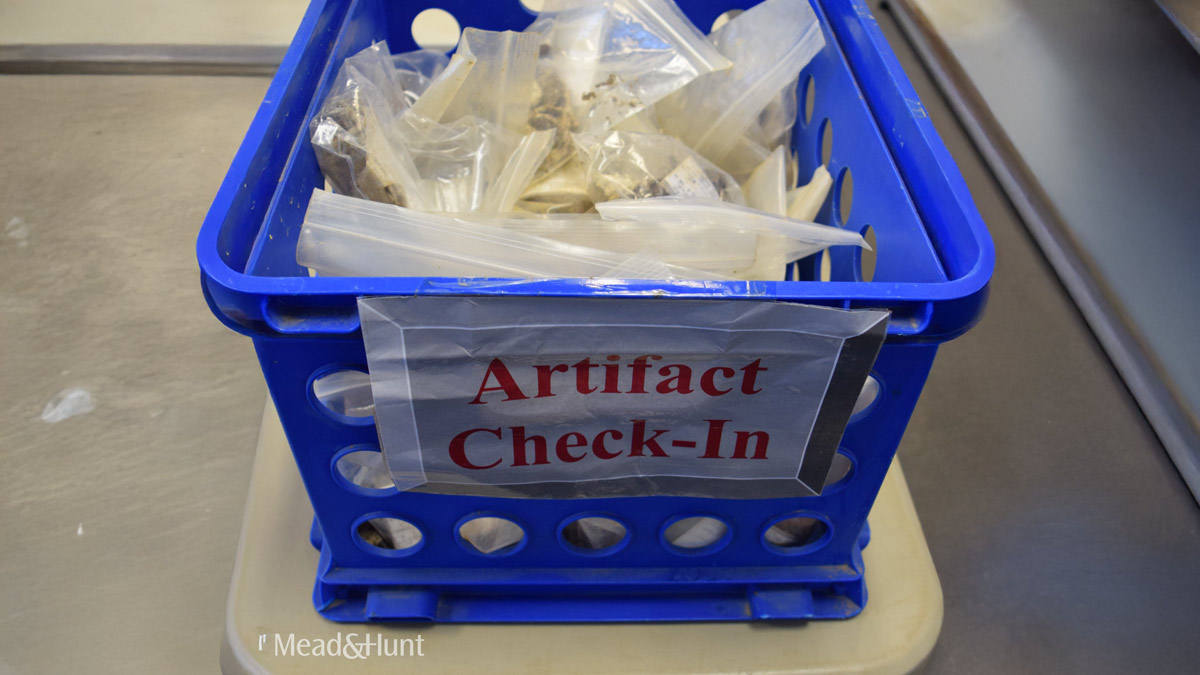Figure 1: Artifacts from the field are brought to the lab and placed in a crate to be checked in.
Have you ever thought about the journey artifacts take after they have been discovered by archaeologists in the field? Once they get to the archaeological lab, a whole new adventure begins. The process is meticulously coordinated to keep artifacts organized and gather data for archaeologists to make site interpretations. This blog shares how our archaeological lab staff process an artifact.
Once archaeological fieldwork is completed, artifacts are brought to the lab and placed inside a crate to be sorted and checked in by lab staff (Figure 1). They also review field-based documentation prepared on site, including site notes, temporary artifact tags, and artifact logs, each describing what was found and first impressions of what the findings mean for the interpretation of the archaeological site.

Working with one archaeological site collection at a time, lab staff complete a preliminary review of the artifacts using a log prepared by field staff to ensure that all artifacts are accounted for (Figure 2). During check in, artifacts are placed on a tray and are sorted by material type to prepare for washing. Since the artifacts are typically too dirty to accurately analyze at this stage, check in logs describe the collection in general terms and highlight objects that may turn out to have valuable research potential (Figure 3). At this time, inadvertently collected materials, such as modern garbage, plant roots, natural rocks, and excess amounts of soil, are removed and discarded.
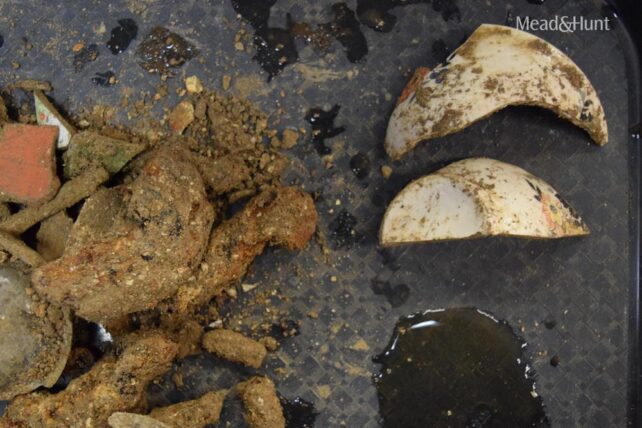
Most artifacts are cleaned using plain tap water and a soft bristled toothbrush (Figure 4). Other tools, such as dental picks and pipe cleaners, can also be useful. Fragile materials, objects that may dissolve in or be damaged by water, and artifacts with residues valuable for analysis are treated on a case-by-case basis and may be dry-brushed or even left dirty for future processing and analysis.
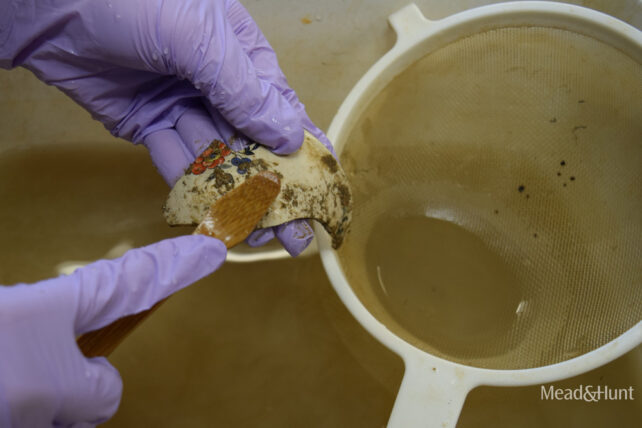
After all the dirt has been removed, the artifact is rinsed in a bowl of clean tap water to ensure no residue is left behind to cloud the surface (Figure 5).

Each artifact is placed in a mesh tray atop a newspaper-lined rack to dry (Figure 6). Newspaper helps wick away moisture while the mesh tray keeps the artifact from coming in direct contact with the wet paper. Corresponding paper tags are kept with each artifact to ensure that the artifact is not separated from its key recovery information. All artifacts are left to dry for a minimum of 24 hours before being rehoused in clean polyethylene archaeological storage bags that are archivally stable and meet specific curation requirements.
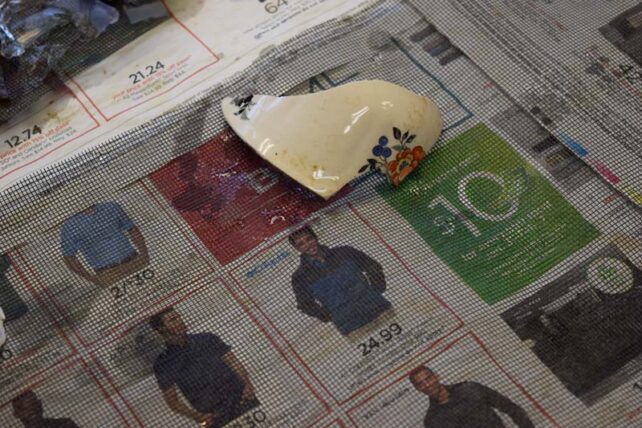
Once the artifacts are clean and dry, a detailed list of each object is created (Figure 7). This artifact cataloging process is completed by lab staff in consultation with our expert project archaeologists. Catalog entries for each artifact include as much relevant information as possible, from basic facts such as what the artifact is made of and general date ranges to things like unusual use ware patterns and identifiable maker’s marks. Sometimes, historic artifacts with patent numbers or unique lettering can be identified to the exact model, as with the cosmetic bottles pictured in Figure 7. Throughout the cataloging process, artifacts are assessed to determine the potential for a process called “cross-mending,” where pieces are pieced back together like a puzzle to try to recreate whole or partial vessels. If cross-mending is possible, this is documented within the catalog and completed during the final stages of artifact processing.

When an artifact is cataloged, it will usually be assigned a catalog number in accordance with state curation guidelines (Figure 8). Catalog numbers are unique to each artifact and encode information such as the site number, the year the fieldwork took place, and where the artifact was found. A standard way to affix an artifact catalog number to the surface of each object is by using B-72 in acetone as a base and then carefully writing the catalog number on each artifact using archival ink. The goal is to make sure that each artifact is labeled to understand details about its recovery while also being reversable and preservation friendly.
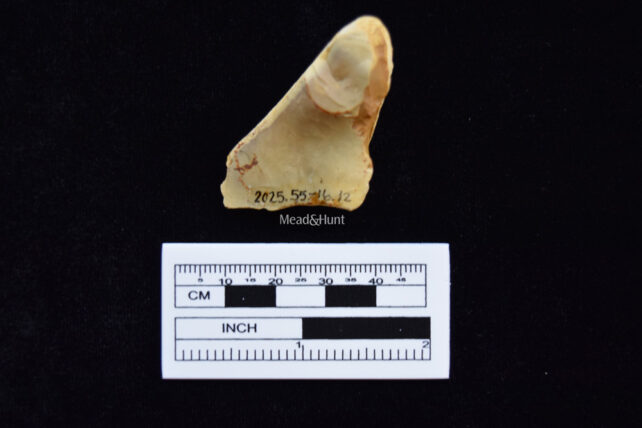
After all analysis is completed for a project, the artifacts are delivered to a final repository for long-term storage. Depending on the nature of a project, that repository might be a state curation facility, the federal government, a municipality, or the personal collection of the private landowner who owns the site. Collections owned by the state and other public institutions are frequently used for public outreach, academic research, or incorporation into museum exhibitions.
This laboratory process ensures that our archaeologists and future researchers have access to the maximum amount of valuable information about each archaeological find, while also prioritizing the respectful and conscientious handling of cultural materials in our care. By sharing the carefully planned journey that each artifact takes through our lab, we hope to demonstrate the value we place in preserving our shared past and encourage you to do the same.
This article was originally published in January 2025 by Dovetail Cultural Resource Group, a Mead & Hunt Company.
